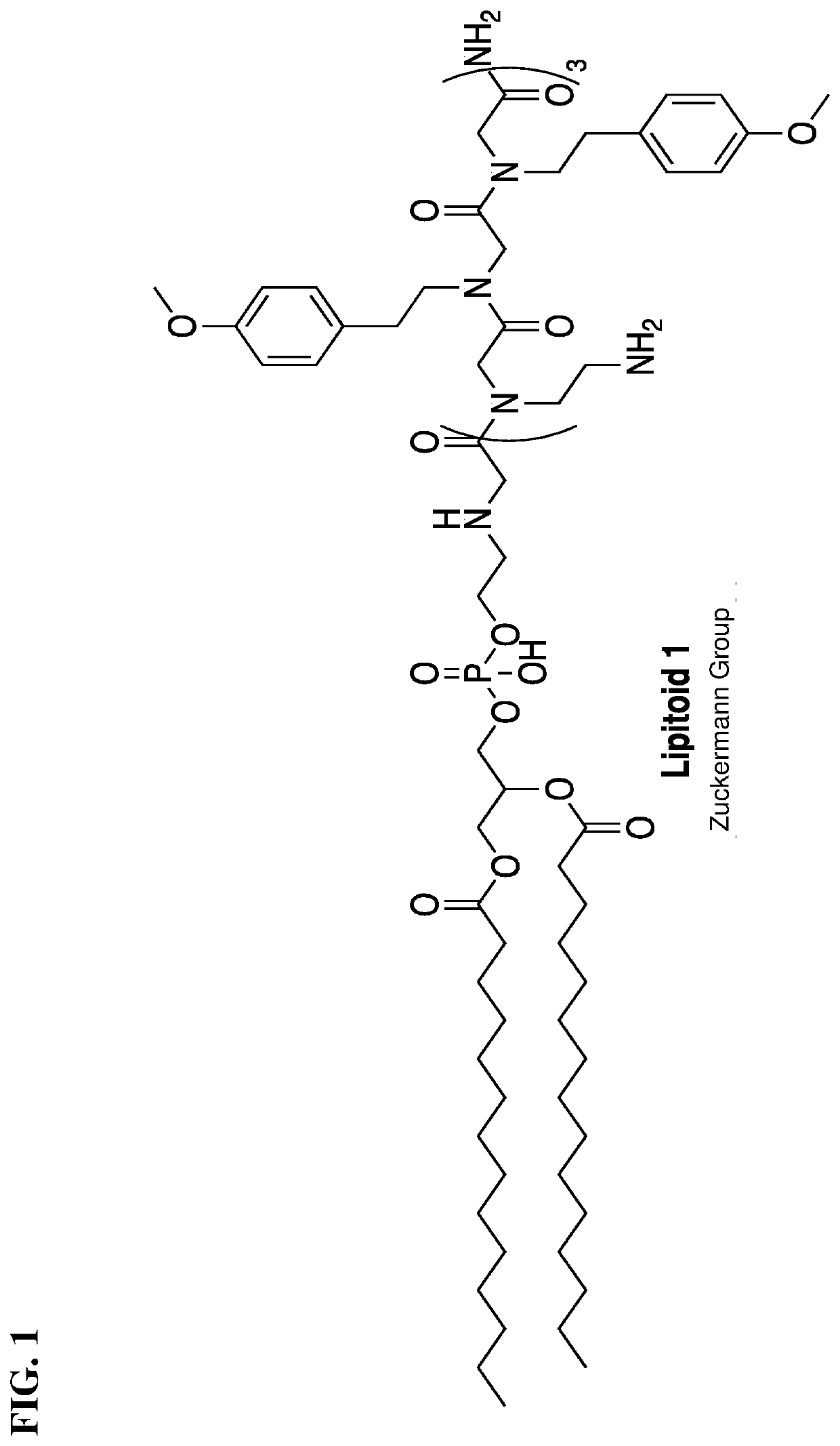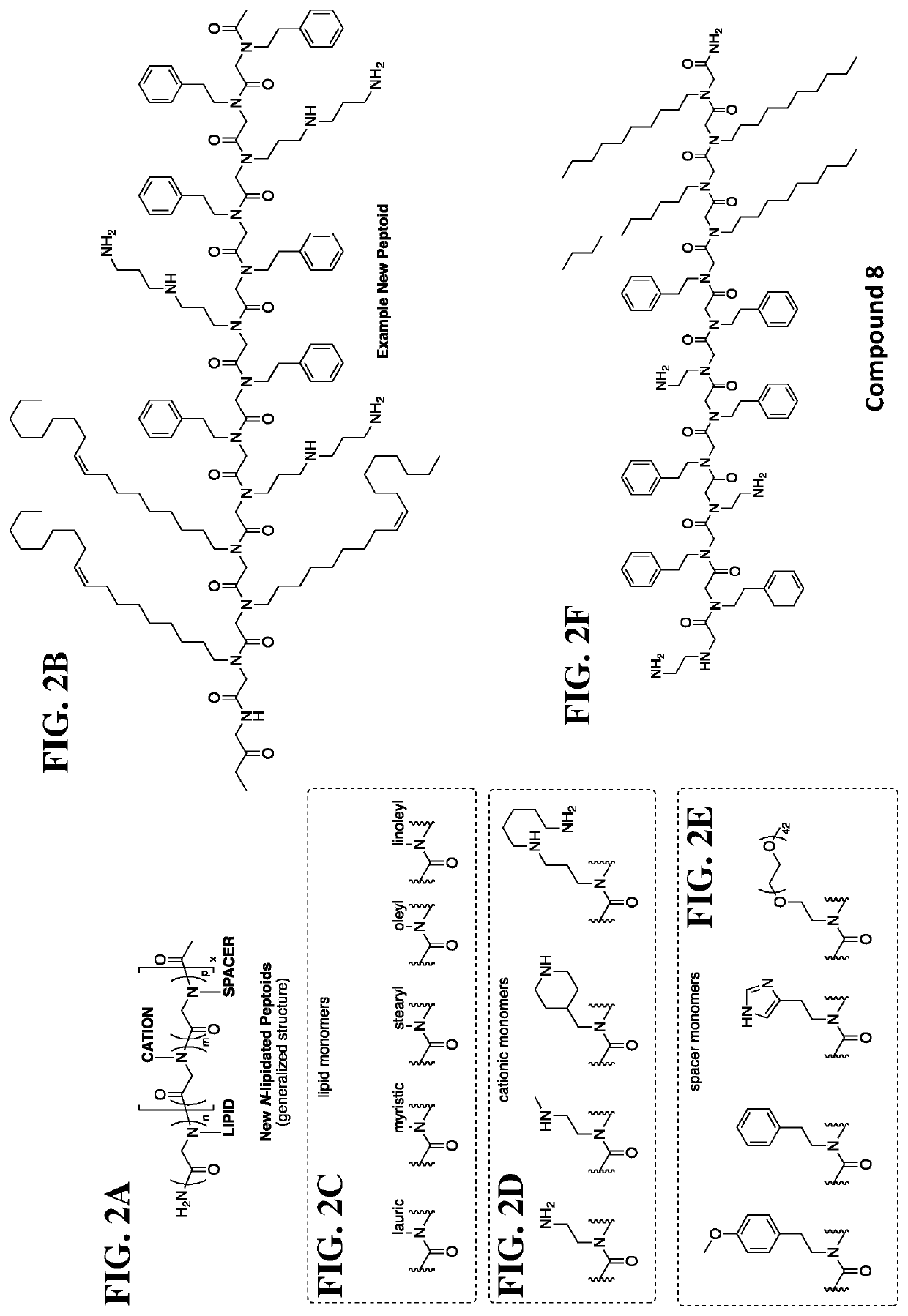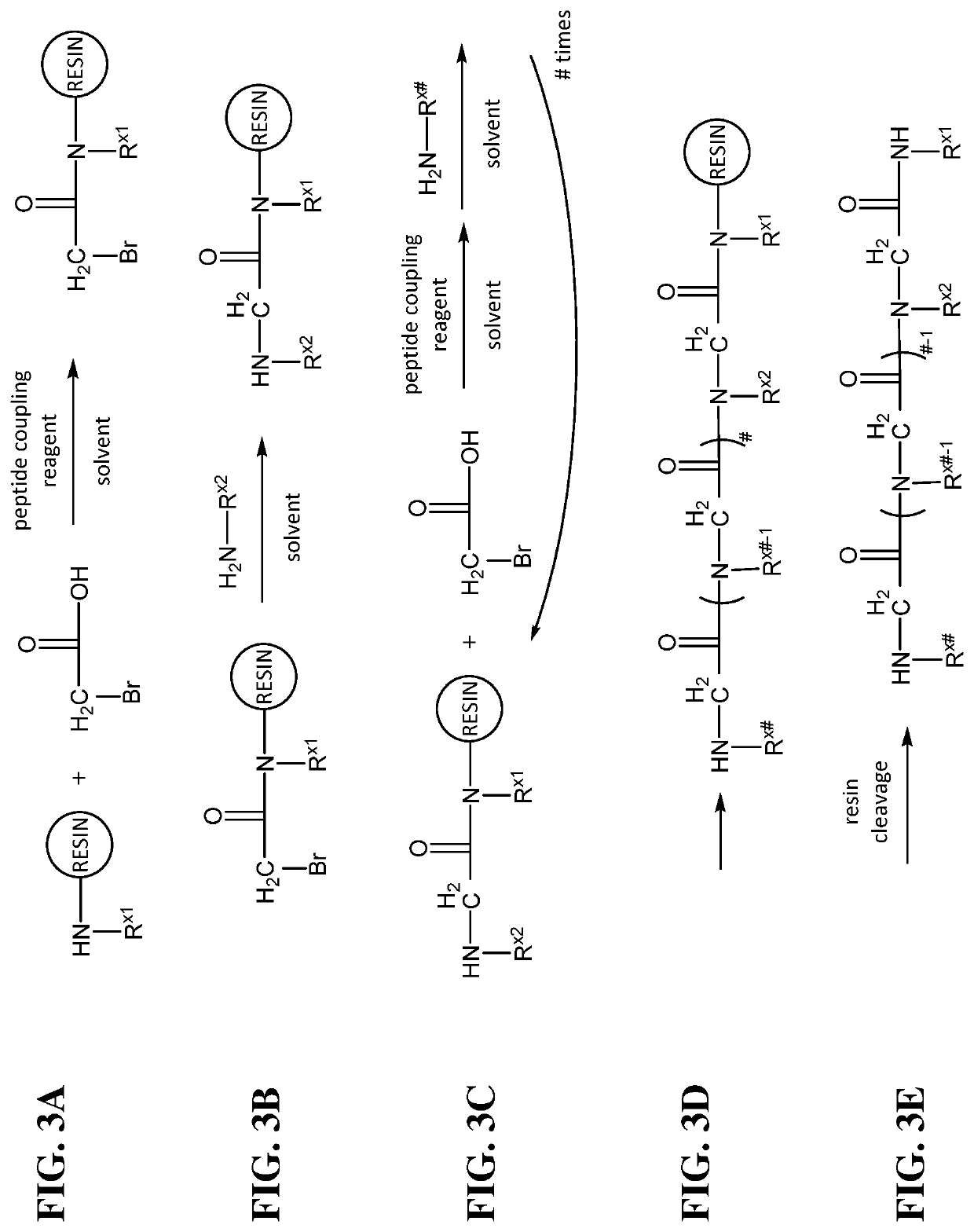Lipidated cationic peptide-peg compositions for nucleic acid delivery
a technology of lipidated cationic peptides and compositions, applied in the direction of peptides, genetic material ingredients, macromolecular non-active ingredients, etc., can solve the problems of particle instability and aggregation, the optimization of lipid formulations is often difficult, and the complications of nucleic acid lipitoids may still be difficult to solv
- Summary
- Abstract
- Description
- Claims
- Application Information
AI Technical Summary
Benefits of technology
Problems solved by technology
Method used
Image
Examples
example 1
of Exemplary Tertiary Amino Lipidated Cationic Peptides for Nucleic Acid Delivery
[0386]The following example describes the general protocol for synthesis of the tertiary amino lipidated and / or PEGylated cationic peptide compounds of formula (I) as described herein.
[0387]In the description provided below, all Ra and Rb are —H. All polymers are synthesized using bromoacetic acid and primary amines. FIGS. 2B-2E provides some of the exemplary substituents of the primary amines at R2, R3, R4, R5, and R6 to prepare the tertiary amino lipidated and / or PEGylated cationic peptide compounds of the present disclosure.
[0388]An Fmoc-Rink amide resin is used as the solid support. The Fmoc group on the resin is deprotected with 20% (v / v) piperidine-dimethylformamide (DMF). The amino resin is then amidated with bromoacetic acid. This is followed by amination of the α-carbon by nucleophilic displacement of the bromide with a primary amine. The two steps are successively repeated to produce the desir...
example 2
and Characterization of Representative Amino Lipidated Peptoids
[0396]Amino lipidated peptoids were synthesized by the submonomer method described above in Example 1 with bromoacetic acid and N,N′-diisopropylcarbodiimide (DIC). Polystyrene-supported MBHA Fmoc-protected Rink amide (200 mg representative scale, 0.64 mmol / g loading, Protein Technologies) resin was used as a solid support. For bromoacetylation, resin was combined with a 1:1 mixture of 2 M bromoacetic acid and 2M N,N′-diisopropylcarbodiimide (DIC) for 5 minutes. Amine displacement was carried out using a 1M solution of amine in DMF for 1 hour. Following synthesis, crude peptoids were cleaved from resin using 5 mL of a mixture of 95:2.5:2.5 trifluoroacetic acid (TFA):water:triisopropylsilane for 40 minutes at room temperature. Resin was removed by filtration and the filtrate concentrated using a Biotage V10 evaporator. The crude peptoids were further concentrated by lyophilization from a 25% solution of MeCN in water. Puri...
example 3
on of Representative Amino Lipidated Peptoids with Oligonucleotides to Form Nanoparticle Compositions
[0398]The following example describes the general protocol for the formulation of the tertiary amino lipidated and / or PEGylated cationic peptide compounds of formula (I) as described herein with oligonucleotides.
[0399]In standard formulations, the amino lipidated peptoid is dissolved in anhydrous ethanol at a concentration of 0.5 mg / mL (for in vitro experiments) or 5 mg / mL (for in vivo experiments). The resulting solutions are stable at room temperature, but should be stored at −20° C. The nucleic acid cargo is dissolved in DNAse or RNAse-free water at a final concentration of 0.2 mg / mL (for in vitro experiments) or 1 mg / mL (for in vivo experiments). These solutions should be stored at −20° C., or at −78° C. for longer time periods.
[0400]To prepare nanoparticle formulations, the amino lipidated peptoid is mixed by pipetting with nucleic acid at a mass ratio between approximately 1:1 ...
PUM
 Login to View More
Login to View More Abstract
Description
Claims
Application Information
 Login to View More
Login to View More - R&D
- Intellectual Property
- Life Sciences
- Materials
- Tech Scout
- Unparalleled Data Quality
- Higher Quality Content
- 60% Fewer Hallucinations
Browse by: Latest US Patents, China's latest patents, Technical Efficacy Thesaurus, Application Domain, Technology Topic, Popular Technical Reports.
© 2025 PatSnap. All rights reserved.Legal|Privacy policy|Modern Slavery Act Transparency Statement|Sitemap|About US| Contact US: help@patsnap.com



